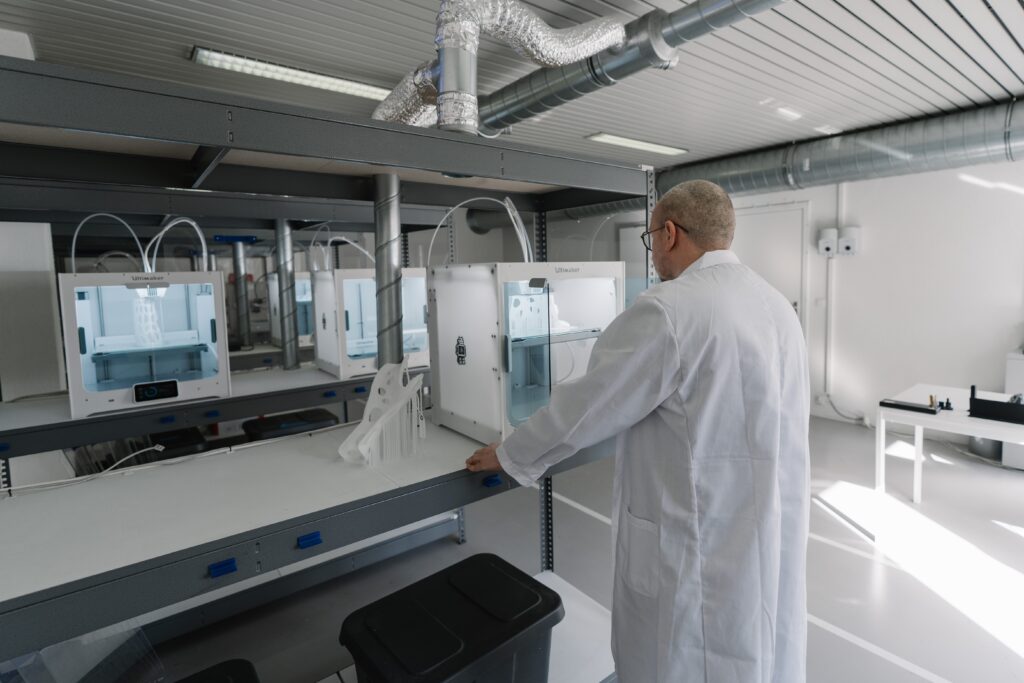In the United States, there are over 6,000 hospitals, approximately one million hospital beds and thousands of small clinics. The physical infrastructure for healthcare infrastructure includes buildings, research labs, costly mechanical systems, leading-edge technology and medical equipment of all types. America’s hospital infrastructure is designed and expected to function under a daunting array of circumstances, including providing services 24 hours per day, seven days a week and meeting continually evolving federal quality and safety standards.
For more than 50 years, the federal government has provided funding for the ongoing modernization of the country’s healthcare infrastructure. That’s because of the critical nature of citizen needs. Not only does the funding support ensure sustainability but healthcare facilities are a vital component of the country’s economic development. In fact, hospitals and health systems are economic anchors that support 1-out-of-every-9 jobs in the U.S. and provide more than $1 trillion annually to the nation’s GPA in goods and services.
The 2021 American Rescue Plan Act allocated $1 trillion to construct, renovate and modernize healthcare facilities. That same year, the Build Back Better Act provided another $10 billion for projects related to healthcare facilities. That funding is still flowing, and 2024 will see hundreds of healthcare projects launched because there is a looming deadline on the availability of funding.
Texas state leaders are making a substantial investment in mental health care. One of the first initiatives will be the construction of a new North Texas State Hospital in Wichita Falls. The $452 million project includes $300 million for construction and another $152 million for the demolition of an old structure. The project is in the planning phase and construction is slated to begin in summer 2024.
The effort is part of a larger statewide initiative that includes plans to construct additional new hospitals in Amarillo and Lubbock and replace a hospital in Terrell. Those projects will follow the Wichita Falls project.
Officials at the University of Utah will oversee a project to construct a medical campus designed to address the health needs of Salt Lake Valley’s residents. This initiative will represent the largest capital project ever undertaken in or near West Valley City. The $855 million project will include a multi-specialty outpatient health center, an emergency building and a hospital facility. A state bond has provided financial support, but university officials plan to break the project into phases to combat rising construction costs. Phase one will include the construction of the multi-specialty health center, which will be designed to offer primary care services and more specialized services. That effort will begin in 2024 and the entire medical campus is scheduled for completion in 2027.
In a collaboration between Michigan State University and Henry Ford Health, a $393 million joint medical research center is being designed for construction as a part of a $3 billion development in Detroit’s New Center. The 325,000, eight-story research lab will be located near the Henry Ford Hospital and will house basic and translational health research through a diverse partnership of health professionals.
The project is expected to include wet bench laboratories and central support facilities, such as core labs, vivarium and common meeting areas for research in cancer and health disparities. It will also allocate an entire floor to a state-of-the-art neurofibromatosis research institute. Construction is scheduled to begin as early as May 2024. Officials from Michigan State University and Henry Ford Health have stated that they expect a completion date sometime in 2027.

Photo by Tom Claes on Unsplash
In October of 2023, officials at the Texas Health and Human Services Commission (HHSC) announced that an investment of $120 million would be used to renovate an aging treatment center into a state-of-the-art inpatient psychiatric facility in Harlingen, Texas. The upgraded treatment center will serve patients in need of treatments related to intellectual or behavioral disabilities. The existing center will be renovated to include a new 50-bed treatment annex to provide inpatient services. The project will also call for upgraded security and state-of-the-art therapeutic spaces. This project’s planning and design phase began in October 2023 and will continue through early summer 2024. Construction is slated for late summer 2024, with completion scheduled for 2027.
The south-central region of Kansas in Sedgwick County will soon have a new psychiatric hospital capable of extending mental health services and minimizing wait times for individuals needing evaluations and treatment. The project currently has $55 million in funding committed. The new facility will be designed to provide 50 beds initially but with the potential to accommodate up to 100 beds. Sedgwick County officials are working to acquire property and will either modify an existing structure or construct an entirely new facility. The project is currently in the design phase, and planners hope to acquire the required property by the end of January so that the project can move forward.
Commissioners at Lee County in Alabama recently approved the use of $4 million in federal funds to plan and construct a new psychiatric facility. The effort follows a situation where approximately 500 patients had to be turned away in 2021 because of a lack of space. The new facility will have 40 beds for short-term mental health patients and nine long-term care adolescent beds. It will also be designed to relocate the psychiatric care department and 6-12 grade school for long-term adolescent patients to a freestanding building. A final decision on the location has not yet been finalized. The total project cost is estimated at approximately $29 million, and construction is scheduled to begin in the spring 2024.
Medical facility projects will call for numerous types of industry expertise as well as an abundance of equipment, technology and security components. More information about these types of upcoming projects can be gathered by contacting state health and human service agencies throughout the U.S.
About the Author:
As President and CEO of Strategic Partnerships, Inc., Mary Scott Nabers has decades of experience working in the public-private sector. A well-recognized expert in the P3 and government contracting fields, she is often asked to share her industry insights with top publications and through professional speaking engagements.

Tags: Community Health, Economic Development, Federal Funding, Health Systems, Healthcare infrastructure, Healthcare Modernization, Infrastructure Investment, Medical Research, Modern Healthcare, Public Health






 RSS Feed
RSS Feed